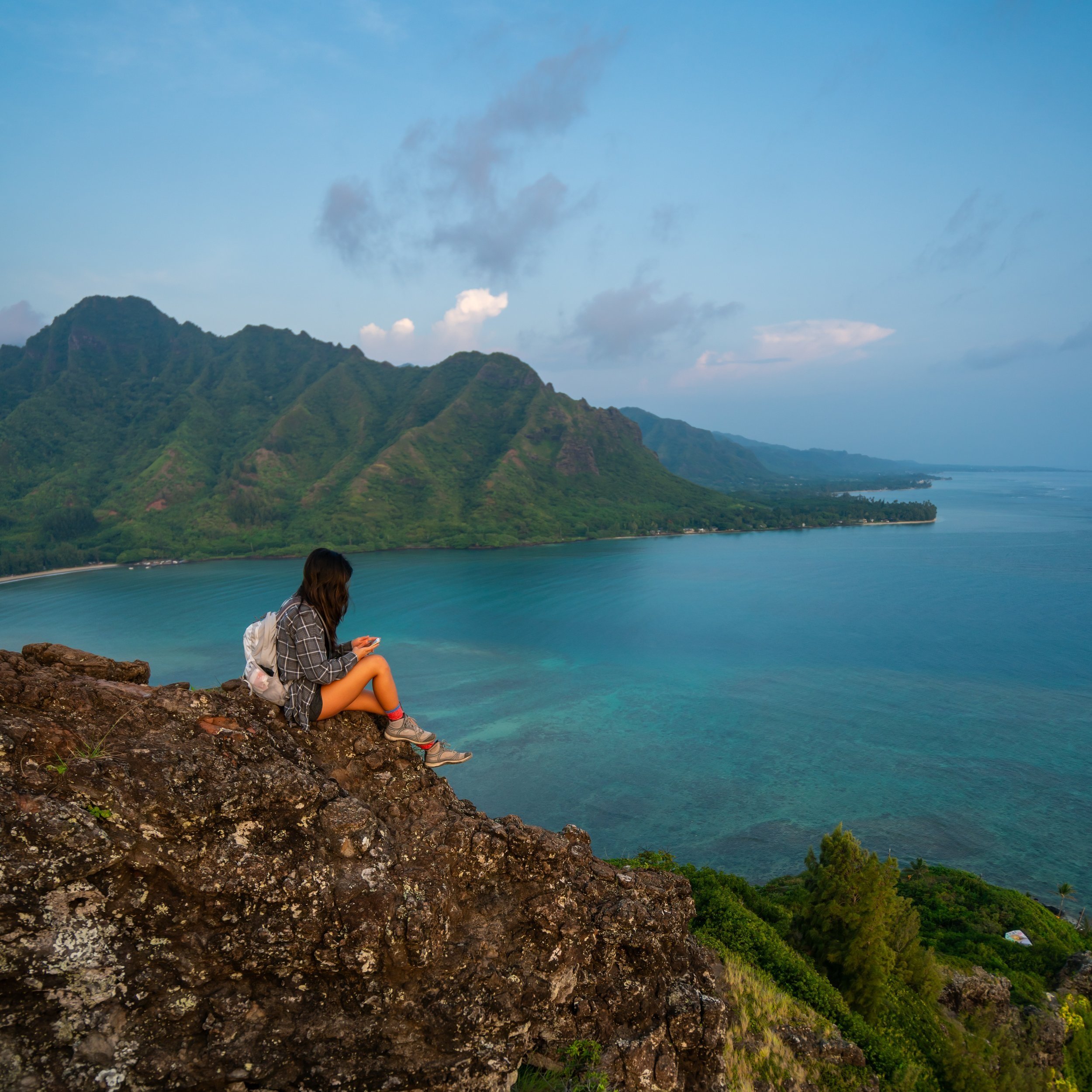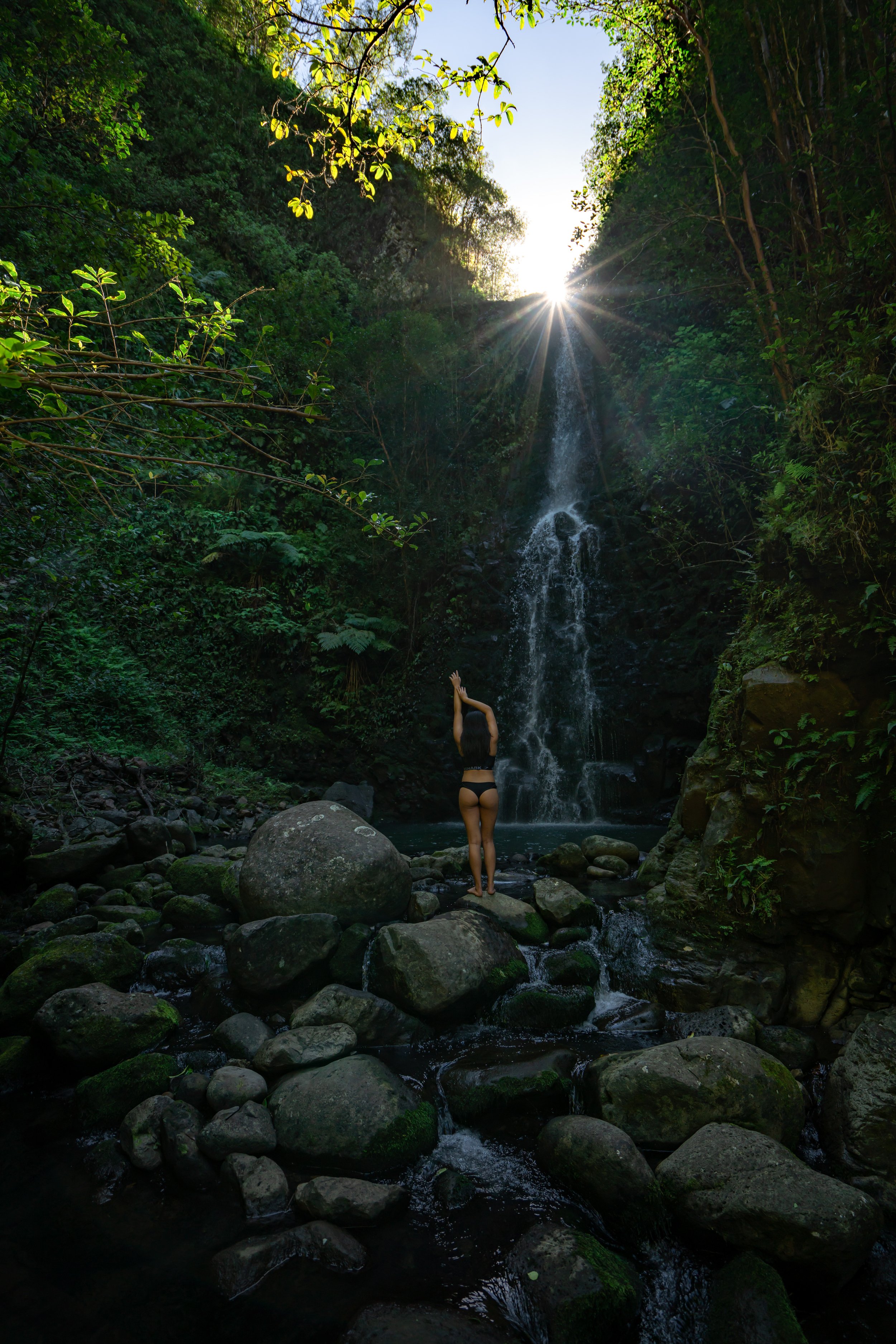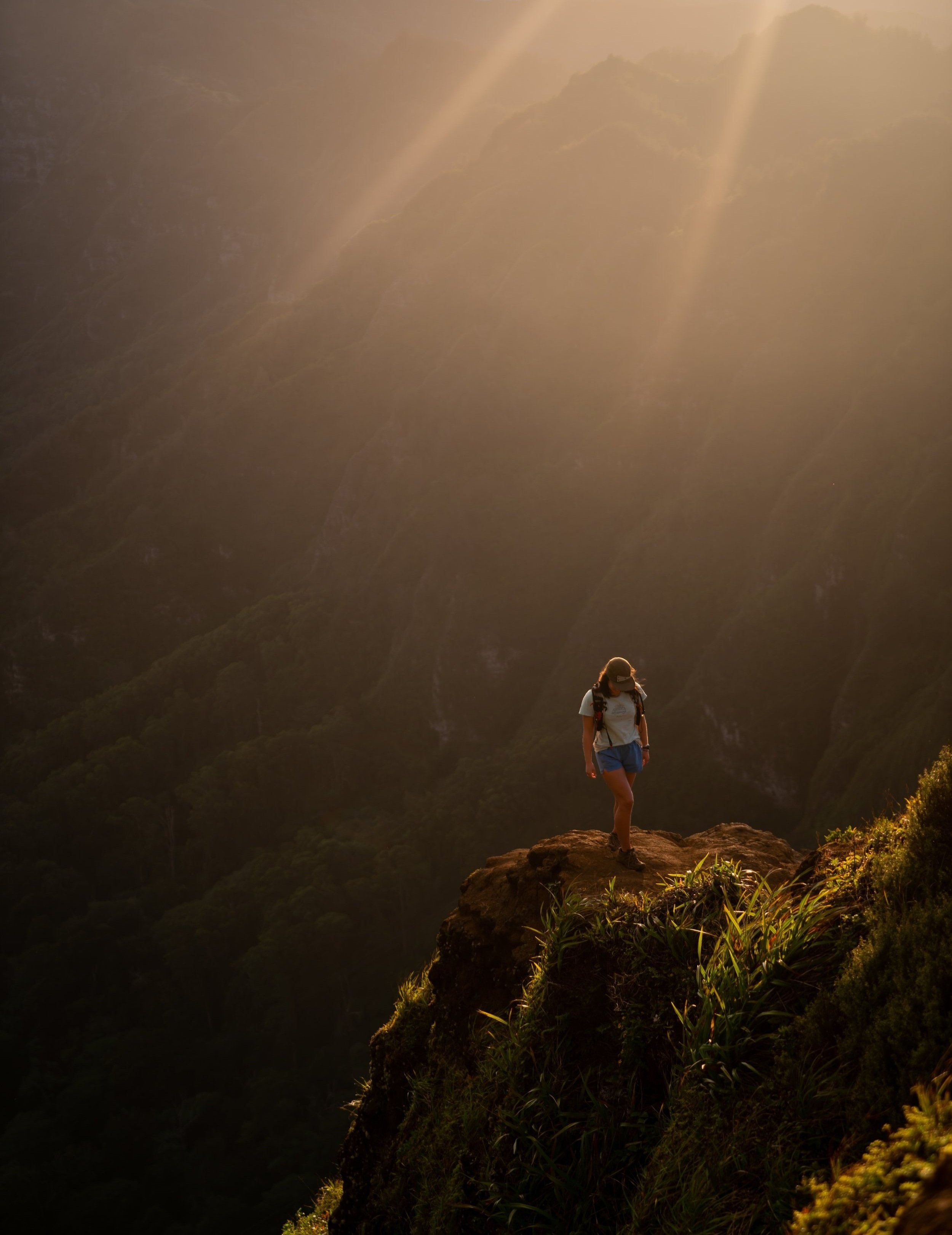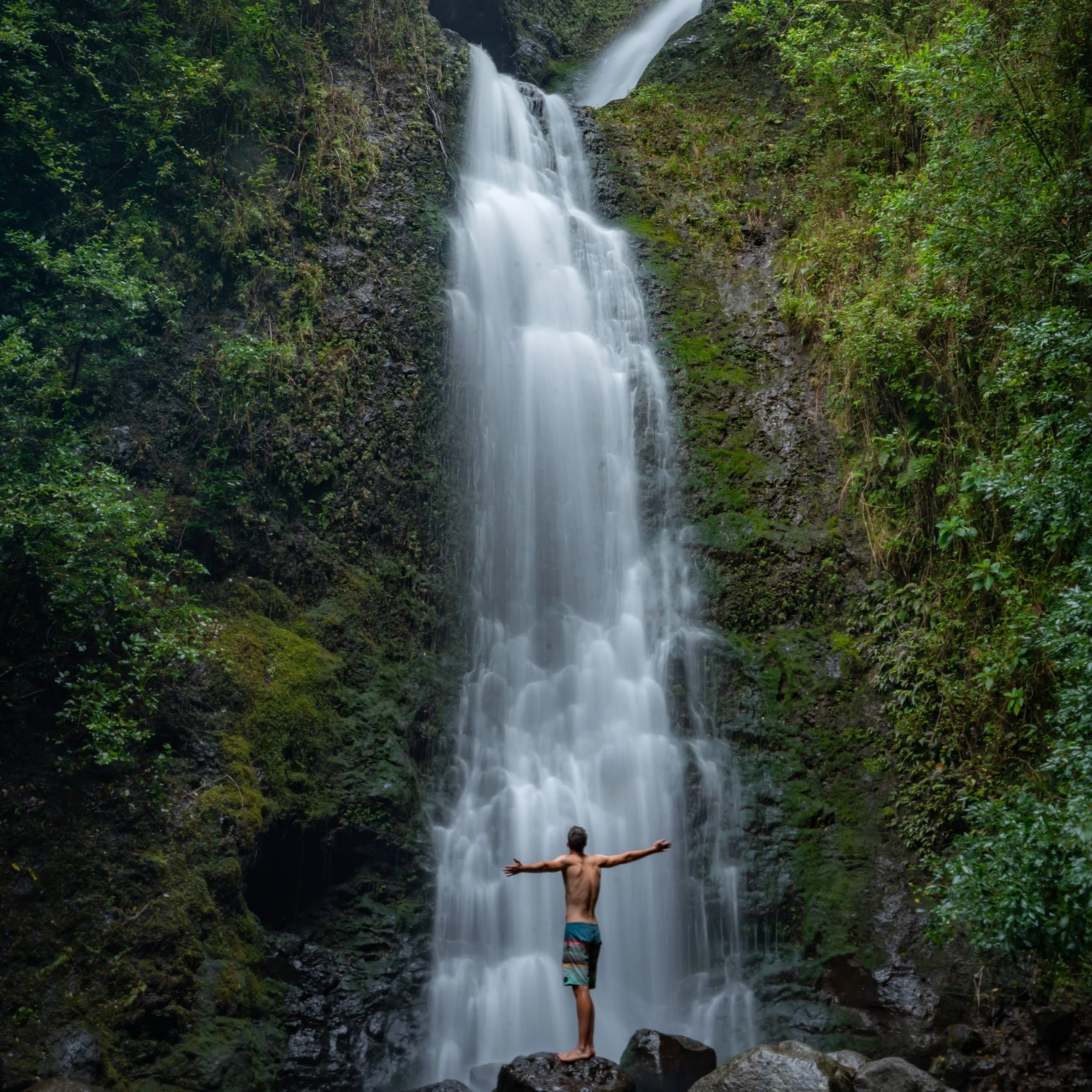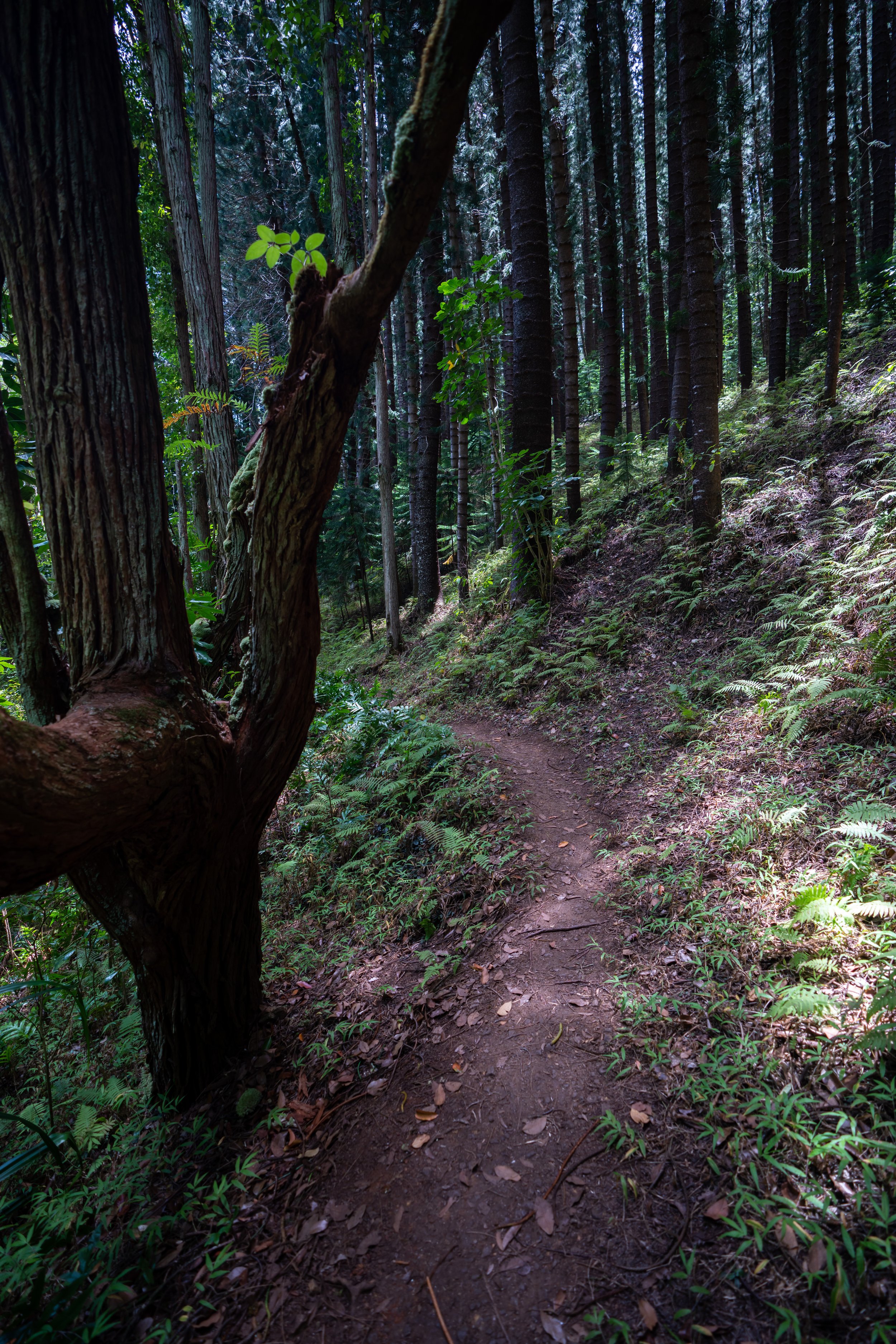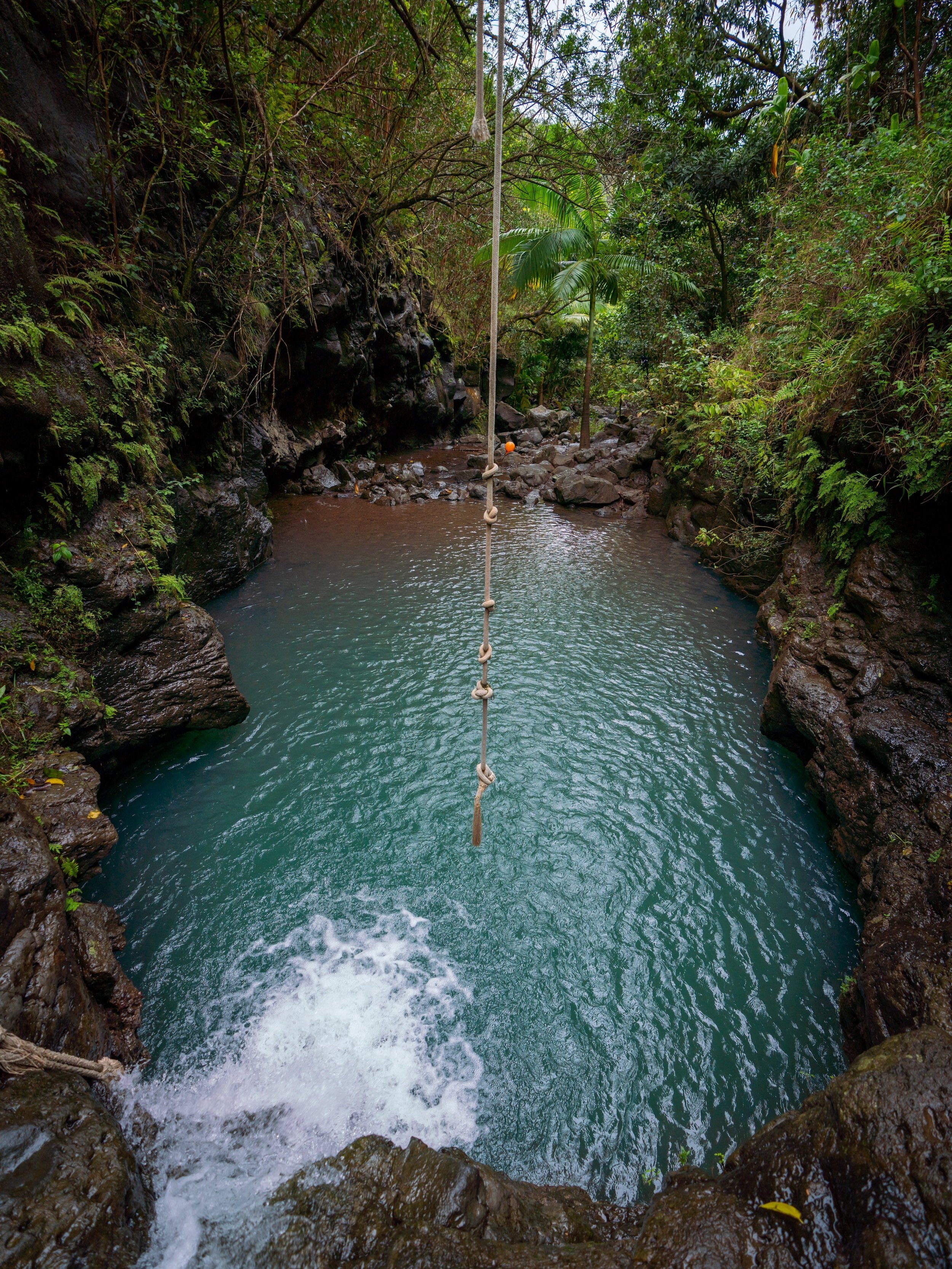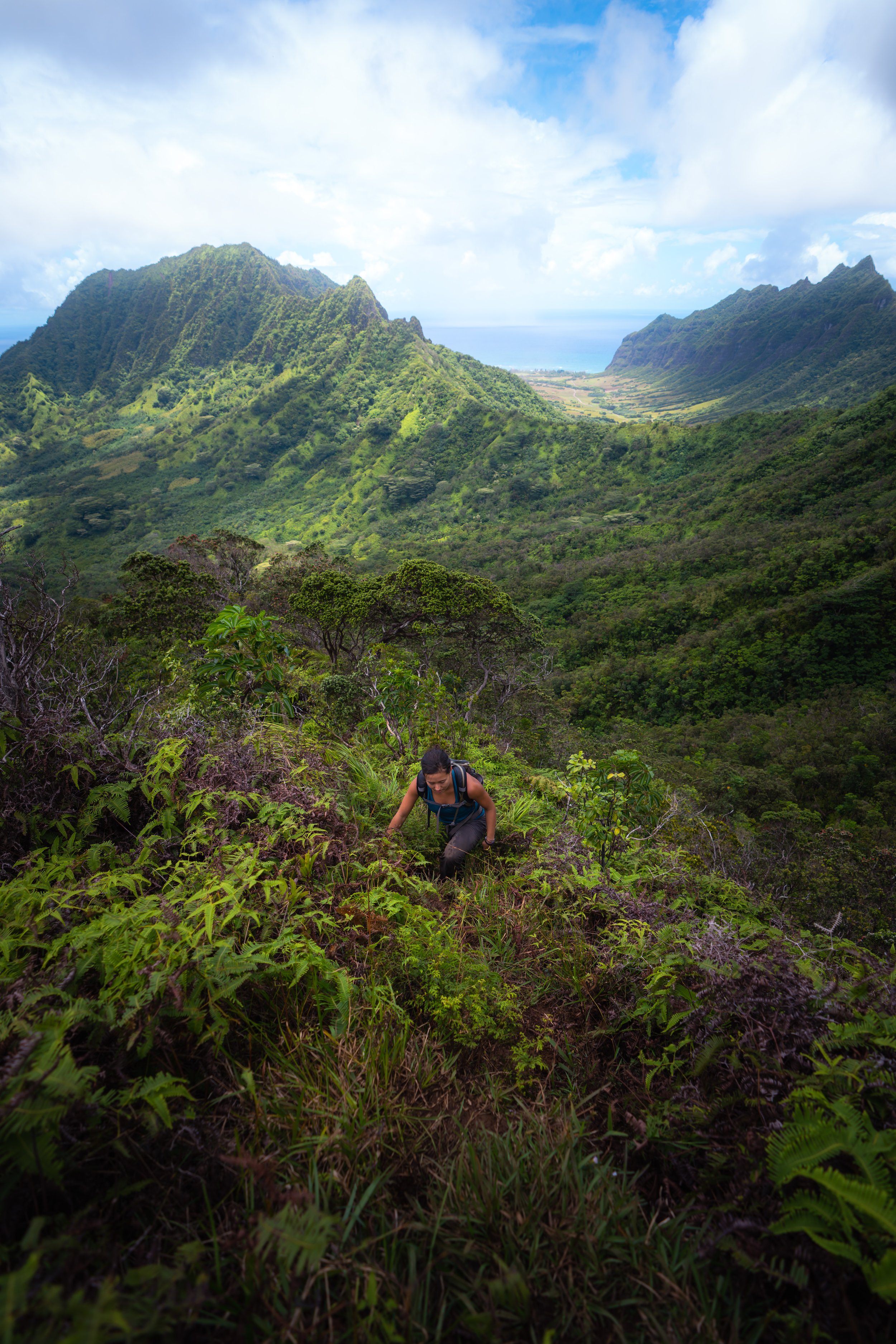Hiking the Pali Notches Trail on Oʻahu, Hawaiʻi
Distance (Roundtrip): 0.8 miles / 1.3 km
The Pali Notches Trail on Oʻahu is a stunning, short, and—most of all—steep hike along a small section of dramatic cliffs and ridges on the Koʻolau Summit Trail (KST) above the Nuʻuanu Pali Lookout.
That said, the dramatic, exposed ridges on the Pali Notches Trail inevitably make the hike one of the best all-around sunrise and sunset hikes on the island!
However, this goes without saying that the Pali Notches Trail is easily one of the more dangerous hikes on Oʻahu, meaning the trail is absolutely beyond some people’s hiking ability.
To this point, it’s important to be aware that the Pali Notches hike is NOT an established or maintained trail, and you accept all potential consequences for attempting such a dangerous adventure.
Pali Notches Trailhead Parking
Parking for the Pali Notches Trail is located in the same parking lot as the Nuʻuanu Pali Lookout.
However, for those trying to visit the trail at sunrise and sunset specifically, parking is not recommended in the normal parking lot shown below, as fines have been known to be issued to parked cars outside of the normal Hawaiʻi State Park hours.
Therefore, if you plan on visiting outside of the posted hours, be sure to park elsewhere off the Pali Highway to avoid receiving a fine.
Google Maps Directions: Nuʻuanu Pali Lookout
Nuʻuanu Pali Lookout Parking Fee
Hawaiʻi Residents/ Military - This is your home, and you are free to park and enjoy the lookout by simply showing your Hawaiʻi State or Military ID to the attendant working when you park.
Visitors/ Non-Hawaiʻi Residents - All non-residents wishing to park at the lookout are required to pay the small fee at the kiosk, located in the parking lot.
Hiking the Pali Notches Trail
By hiking this trail, you accept all the risks and potential legal consequences for entering a closed area.
Regardless of the short distance, the Pali Notches Trail is NOT a beginner hike.
To add to this, if the Kailua-Nuʻuanu area has rained recently, the trail will likely be extremely muddy and slippery, which will last all the way until the first lookout.
After the initial hill, the trail will cross the drainage shown in the photo below.
Then, the Pali Notches Trail will begin climbing up the steep ridge for the remainder of the hike to the first notch.
Know that on this stretch, there is essentially no great places to take a break, with the exception of the Middle Lookout shown below.
Middle Lookout (Kailua)
It’s important to know that the beginning of the trail, shown above, is generally regarded as the 'easier' and less-exposed section of the hike. However, once the trail emerges from the trees at the Middle Lookout, you will be exposed to steep and dramatic cliffs for the remainder of the Pali Notches Trail.
Most of these sections are areas where a fall would almost certainly result in serious injury or worse.
Just like the beginning, expect a constant incline until the first notch.
Overall, this section before the first notch isn’t anything more than a mainland class 3 scramble, but the real danger lies in a potentially slippery, wet trail next to dramatic drops on either side of the ridge.
Pali Notches
Warning
If you don’t feel comfortable with exposure and vertical climbing, I recommend that you stop at the top of the first notch.
To further this point, the down-climb off of the first notch is the easiest of all, and the trail only gets more and more difficult, with the Chimney at the end being the crux of the route.
Second Notch
To add to the warning above, the down-climb off the second notch is much longer and trickier, meaning a fall off the second would have much higher consequences than the first.
Therefore, if you had any difficulty with the first notch, don’t down-climb the second.
Third Notch
Compared to the first two notches, the third Pali Notch is the most exposed on either side of the ridge.
But then, if you make it past the third, the ridge abruptly meets the bottom of the Chimney, which is by far the most difficult obstacle of all. This is especially true if you have to factor in a climb back down.
The Chimney
If you don’t know what you’re doing, DON’T climb the Chimney.
However, if you reach the base of the chimney and decide to move forward, I can tell you that the first five feet of the climb are the hardest, as there is maybe one solid place to put your foot.
Once you are higher, you’ll have more options to keep moving up, but remember that climbing up is always easier than going back down.
The top of the Chimney is what most people consider to be the end of the Pali Notches hike, and it’s where most hikers turn around (had you chosen to hike this far).
Koʻolau Summit Trail (KST)
If you are going to hike higher than the Chimney, I’d say that you are probably familiar with other parts of the Koʻolau Summit and have more Hawaiʻi hiking experience than just the Pali Notches.
However, if you’d like to learn more about the entire summit trail from Pūpūkea to Makapuʻu, I encourage you to check out my separate post below.
Read My Separate Post: Koʻolau Summit Trail (KST)
Native Plants on the Pali Notches Trail
For being such a short, low-elevation trail, there are still a number of native plants that you can find along the Pali Notches Trail, such as Māmaki, Hau, and ʻŌhiʻa lehua, to name a few.
If you are curious about trying the native Hawaiian Māmaki tea, I kindly ask that you don’t harvest Māmaki from our native forests but, instead, buy from one of the local reputable vendors, such as those listed below.
Moreover, if you would like to learn more about these and other native Hawaiian plants from across the islands, I encourage you to scroll through my separate post.
Read My Separate Post: Native Hawaiian Plant Guide



